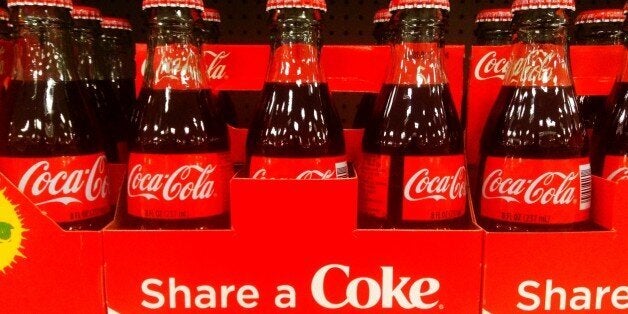
Last month, the Coca-Cola Company made a big promise: it was going to help America lose weight. At the Clinton Global Initiative, Coke, Pepsi and Dr. Pepper all agreed to reduce the sugary calories they sell by 20 percent in ten years, arguing that industry could be part of the solution in curbing a growing obesity epidemic. That's right, Coke, a company that is currently the single largest consumer of sugar on the planet said it was now in the business of slimming down.
But in all the talk of goodwill efforts to curb America's obesity problem, nary a word was spoken about northern Africa, South America or other parts of the world where obesity is a growing problem. According to the World Health Organization, worldwide obesity rates have almost doubled over the past three decades. In the face of this reality, what does Coke plan to do? Will it pledge to reduce calories in overseas markets too?
Fat chance.
Over the past six years, I've spent countless hours in archives studying the Atlanta-based soft drink giant, and if there's one fundamental truth I've learned along the way, it's that Coke does not make more money by selling less Coke.
The statistics tell all. In 1954, the average American consumed 11 gallons of caloric carbonated beverages each year, but by 2000, that figure more than tripled to over 30 gallons annually. By the beginning of the twenty-first century, soft drinks represented the single largest source of calories in the American diet.
In this equation was big money for Coke. Between 1954 and 2000, Coke's gross profits jumped from $137 million to over $14 billion.
But as the company got richer, the nation got fatter. American citizens simply did not need all those excess calories. In 1985, when Coca-Cola completed the switch to a new, cheaper sweetener -- high-fructose corn syrup, the CDC reported that less than 15 percent of the population was obese. Twenty years later, the national obesity rate approached 34 percent.
To be sure, Coke was not the only company contributing to the problem, but it played a major role. We now know from new scientific research promoted by endocrinologist Robert Lustig that sugar, when consumed in large doses, can be turned into fat more quickly than other food calories. It seems Coke's simple promotional pitch that "all calories count" equally simply isn't true.
All evidence suggests that Americans had read the writing on the wall long before Coke began writing its pledge. Over the past several years, many Americans have decided to dump soft drinks in order to cut fat. Between 2004 and 2014, sugary soft drink consumption declined by roughly 20 percent in the United States. Americans, in short, had already made their own pledge by 2014 and weren't waiting for corporate action.
But as sales began to lag in the United States, Coke had to look elsewhere for people who would consume its flagship sugary beverages. The idea that Coke could simply abandon its top full-calorie brands and still offer a healthy portfolio to investors was absurd. So the company turned to overseas markets to make up for lost revenue at home by selling more Coca-Cola abroad, in places like India, where the company happily reported caloric beverages enjoying double-digit growth in 2012. Two years later, the company heralded "six percent growth in brand Coca-Cola" in Eurasian and African markets. If the company was talking about slimming down to the public, it was feedings its shareholders a steady diet of more calories sold around the globe.
We've seen this story before. When health fears about cigarettes caused consumer backlash in the United States, Philip Morris and other big tobacco companies turned their sights to new markets overseas. Coke is doing the same thing, exporting an unhealthy product to places where obesity is not yet the epidemic that it is here.
Coke's aggressive overseas expansion will have long-term consequences for the health of foreign countries. The history of Coca-Cola in the United States shows that once the company becomes embedded in local communities, it is very difficult to limit consumption of company beverages to healthy levels. This is not only because the sugary content of Coca-Cola triggers neurochemical reinforcement mechanisms that encourage repetitive consumption, but also because Coke's unique outsourcing model creates economic stakeholders who become resistant to abandoning a lucrative profit generator. In short, Coke feeds two types of addictions: one biological and the other economic, both of which help the company achieve incredible staying power, even in communities where it is clearly harming human health. Considering this history, perhaps the solution to our obesity problems is bigger than America and bigger than a national pledge. Real solutions will involve questioning the prudence of expanding Coke's sales overseas as well as at home. This is something that will make Coke sick, but it's the only thing that will make America -- and the world -- healthy.

